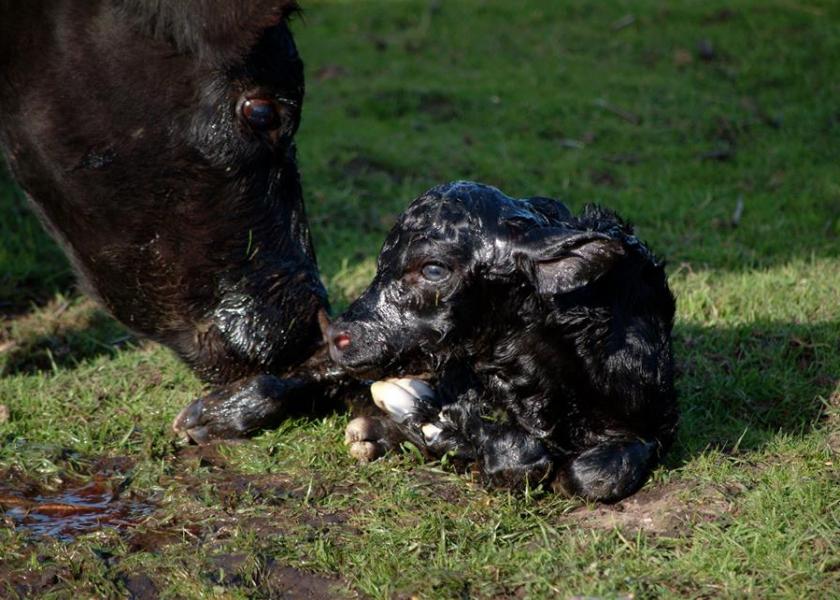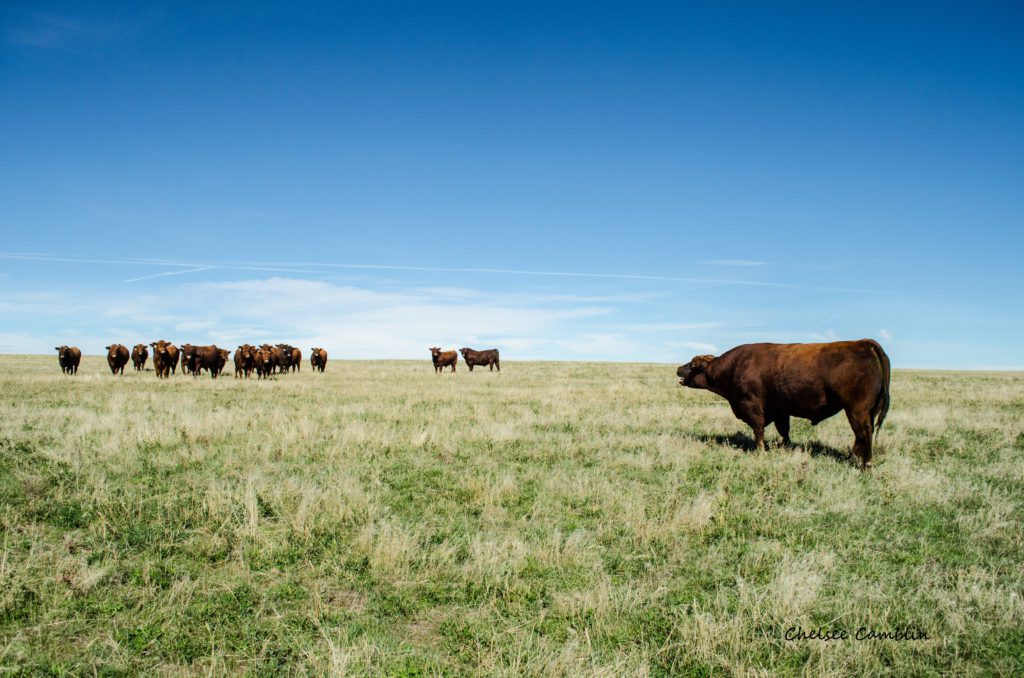There are three stages of bovine parturition. Stage 1, dilation of the cervix is variable in length and can occur over hours or days. During Stage 1, you may or may not notice a mucus string hanging from the vulva, cows with less appetite or cows separating themselves from herd mates. Stage 2 is the delivery of the calf. Stage 2 officially begins with the appearance of the placenta (water bag) at the vulva.
Deciding when/if to provide assistance to a female is based on what you observe at the onset and during stage 2 of the birth process. Stage 3 is the delivery of the placenta or afterbirth, typically happening within a few hours after delivery of the calf. Understanding the birth process, the normal timelines associated with Stage 2 and what a normal presentation of the calf fetus looks like are all critical in making the judgement call of when to offer assistance during calving. Intervening in the calving process too soon or too late can lead to a bad outcome. Unusual disturbance or stress too early in the process can slow down contractions and delay calving. Don’t jump the gun! Give the natural birth process time to run its course before intervening. By that same token, waiting too long to assist can lead to weakened or dead calves.
When to Assist?
“Start your clock” at the appearance of the water bag at the beginning of Stage 2. Normally, at this point, the fetus has entered the birth canal, a portion of the water bag can be observed and the heifer/cow is usually lying down. Uterine contractions occur every couple of minutes and are accompanied by contractions of the diaphragm and abdominal muscles. Surrounded by the water bag, the calf’s front feet and possibly nose are beginning to protrude from the vulva. After the nose is exposed, the dam exerts maximum straining to push the shoulders and chest through the pelvic girdle.
Once the shoulders have passed, the abdominal muscles of the calf relax and its hips and legs extend back to permit easier passage of the hip region. At this point, the water bag has ruptured and the calf is calf is normally free of fetal membranes, because they remain attached to the cotyledons of the uterus. This ensures an oxygen supply for the calf during birth. Upon passing though the vulva, the umbilical cord breaks, respiration begins, filling the lungs with air and the lungs become functional.
Although the time intervals presented here may vary among types and breeds of cattle, and among individuals of the same breed, most recent research indicates healthy heifers, calving for the first time and with a normal presentation of the calf should calve unassisted within 60 minutes of the appearance of the water bag. Healthy cows with normal calf presentation typically calve in less than 30 minutes after the onset of stage 2.
Deciding when to offer assistance is a judgment call and good judgement is the result of experience. Obviously when we come upon a heifer or cow with the front feet and nose of the calf showing, and water bag ruptured but don’t know how long they have been trying, it can lead to anxious moments. When cows are lying down and having contractions and no water bag or calves feet can be seen, it can be a sign of an abnormal presentation or a very large calf. When you don’t know when stage two started, or it is apparent no progress is being made, or all signs are normal but the timelines mentioned are expiring, you will need to conduct a vaginal exam to determine what is going on and if help is needed.
Reference: https://fyi.extension.wisc.edu/wbic/files/2011/03/3-Stages-of-Parturition3.pdf
SOURCE: By Mark Z. Johnson February 13, 2024 Bovine Verterinarian








